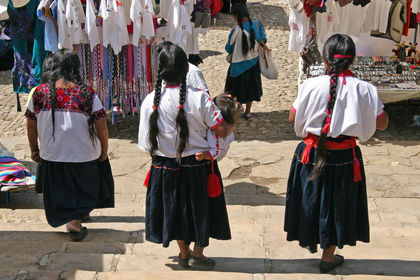Mexico - Population

The population of Mexico in 2003 was estimated by the United Nations at 103,457,000, which placed it as number 11 in population among the 193 nations of the world. In that year approximately 5% of the population was over 65 years of age, with another 33% of the population under 15 years of age. There were 96 males for every 100 females in the country in 2003. During 1970–80, annual population growth was 3.1%, one of the highest rates in the world, but during the 1980s, the growth rate declined to 2.1%, aided by government promotion of family planning. According to the UN, the annual population growth rate for 2000–2005 is 1.45%, with the projected population for the year 2015 at 119,618,000. The population density in 2002 was 52 per sq km (135 per sq mi).
It was estimated by the Population Reference Bureau that 74% of the population lived in urban areas in 2001. Approximately 32% of the entire population lived in 14 urban areas, including the Federal District of over 500,000 persons. The capital, Mexico City, had a population of 17,900,000 in that year. Other major cities were Guadalajara, 3,908,000; Monterrey, 3,416,041; Puebla, 1,968,000; León, 1,050,000; Ciudad Juárez, 1,168,000; Tijuana, 1,167,000; San Luis Potosi, 931,000; Toluca, 1,184,000; and Torreon, 953,000. According to the United Nations, the urban population growth rate for 2000–2005 was 1.7%.
Robert de Vuijst